Welcome to the ultimate guide to angelfish care! Whether you’re a beginner looking to set up your first aquarium or an experienced hobbyist seeking to enhance your angelfish care knowledge, this comprehensive guide is packed with tips and tricks to help you provide the best possible care.
We’ve covered everything from tank setup and maintenance to feeding habits and common health issues. Join us as we dive into the fascinating world of angelfish care and discover how to keep these graceful creatures happy and healthy in your home aquarium.
Table of Contents
ToggleBasics Angelfish Care
Angelfish care begins with selecting the right species for your aquarium. There are several varieties of angelfish, each with its unique characteristics and care requirements. Common species include the freshwater angelfish (Pterophyllum scalare) and the altum angelfish (Pterophyllum altum). When choosing your angelfish, consider size, temperament, and compatibility with other fish in your tank. Selecting healthy specimens from a reputable source is also important to ensure they thrive in their new environment.
Choosing the Right Angelfish Species
When selecting the right angelfish species for your aquarium, consider factors such as size, temperament, and compatibility with other fish. The freshwater angelfish (Pterophyllum scalare) is one of the most popular species due to its striking appearance and peaceful nature. They are known for their distinctive triangular-shaped bodies and long, graceful fins.
Altum angelfish (Pterophyllum altum) are another beautiful species, but they require a taller tank due to their size and swimming habits. Consider the size of your tank and the compatibility of the angelfish species with other fish when selecting.
Setting Up the Perfect Angelfish Tank
Creating the perfect angelfish tank involves providing a spacious environment with plenty of vertical swimming space and hiding spots. Angelfish are known for their graceful swimming behavior, so a tall tank is preferable to a wide one.
Provide plenty of plants, driftwood, and rocks for your angelfish to explore and hide among. A sandy substrate is ideal for angelfish, as they like to sift through the substrate in search of food. Ensure the tank is well lit but not too bright, as angelfish prefer dimly lit environments.
Essential Equipment for Angelfish Care
A few basic pieces of equipment are required to take care of your angelfish. A heater is necessary to maintain a stable water temperature, as angelfish prefer warm water between 75 and 82°F (24 and 28°C). A good-quality filter is essential for keeping the water clean and debris-free. Aeration is important for oxygenating the water, especially in tanks with dense plant growth.
Additionally, a lighting system on a timer can help regulate the day-night cycle for your angelfish, mimicking their natural habitat. Regular maintenance of your equipment is crucial for the health and well-being of your angelfish.
Angelfish Diet and Feeding
Proper diet and feeding are essential aspects of angelfish care. Angelfish are omnivores, meaning they eat both plant and animal matter. A balanced diet for angelfish should include a variety of foods such as flakes, pellets, and live or frozen foods like brine shrimp, bloodworms, and daphnia.
It’s important to feed your angelfish a varied diet to ensure they receive all the nutrients they need to thrive. Overfeeding should be avoided, as it can lead to health issues and water quality problems in the tank.
Feeding frequency is another important consideration in angelfish care. Adult angelfish should be fed once or twice a day, with only as much food as they can consume in a few minutes. Juvenile angelfish may need to be fed more frequently to support their growth.
Understanding Angelfish Nutritional Needs
Angelfish have specific nutritional needs that must be met for optimal health and growth. As omnivores, they require a balanced diet of protein, carbohydrates, fats, vitamins, and minerals. Protein is especially important for angelfish, supporting muscle development and overall growth.
Look for high-quality fish foods with a good balance of protein sources, such as fish, shrimp, and plant proteins. Additionally, angelfish require vitamins C and E for immune function and overall health. Including various foods in their diet will help ensure they receive all the necessary nutrients.
Best Foods for Angelfish
When it comes to feeding your angelfish, a varied diet is key. Some of the best foods for angelfish include high-quality flakes and pellets designed specifically for angelfish. These foods should be supplemented with live or frozen foods like brine shrimp, bloodworms, and daphnia to provide essential nutrients and encourage natural feeding behaviors.
For added variety and fiber, you can also offer blanched vegetables, such as zucchini or spinach. Offering a mix of these foods will help keep your angelfish healthy and happy.
Feeding Frequency and Quantity
Feeding frequency and quantity are important factors to consider in angelfish care. Adult angelfish should be fed once or twice a day, with only as much food as they can consume in a few minutes. Overfeeding can lead to health issues such as obesity and poor water quality, so it’s important to avoid feeding them more than they need.
Juvenile angelfish may need to be fed more frequently to support their rapid growth. It’s a good idea to observe your angelfish while feeding to ensure they eat well and adjust the feeding amount accordingly. Additionally, fasting your angelfish for a day once in a while can help prevent digestive issues and mimic their natural feeding patterns in the wild.
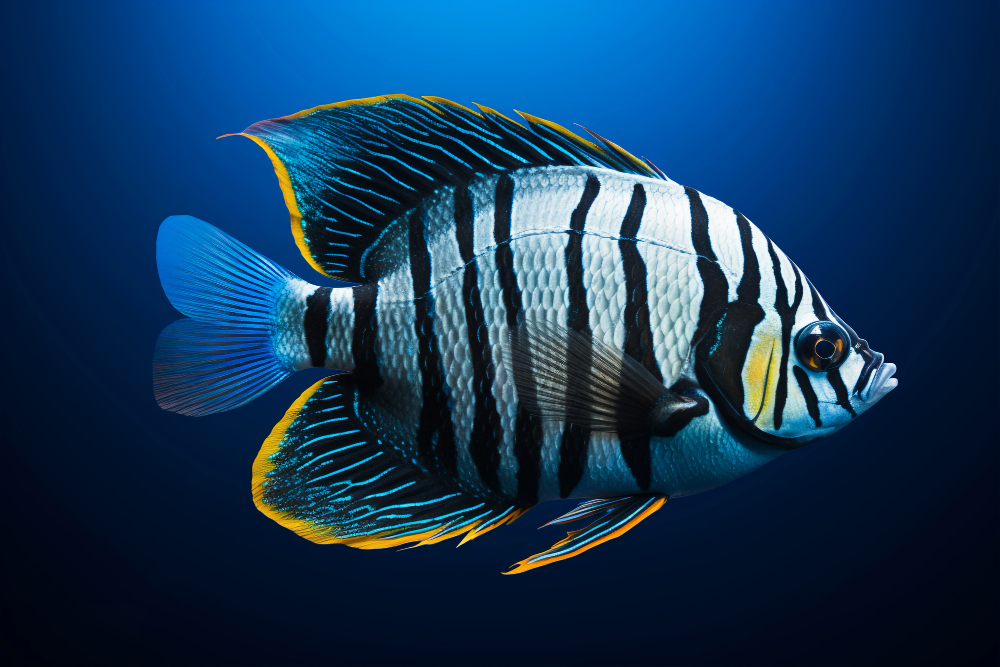
Angelfish Tank Mates
Choosing the right tank mates for your angelfish is an important aspect of angelfish care. Angelfish are generally peaceful fish but can become aggressive towards smaller fish that they perceive as threats or competitors.
When selecting tank mates for your angelfish, consider choosing fish similar in size and temperament. Avoid angelfish with very small fish that they may see as prey and aggressive or fin-nipping fish that may harass them. Good tank mates for angelfish include other peaceful community fish such as tetras, rasboras, and gouramis.
Compatible Tank Mates for Angelfish
Choosing compatible tank mates is crucial for the well-being of your angelfish. Angelfish are generally peaceful but can be territorial, especially during breeding. Good tank mates for angelfish include other peaceful community fish that can tolerate their occasional territorial behavior.
Some suitable tank mates include tetras, rasboras, dwarf gouramis, and peaceful catfish species like Corydoras. Avoid keeping angelfish with aggressive or fin-nipping fish, as they can stress out your angelfish and lead to health issues. Additionally, avoid keeping angelfish with very small fish that they may see as prey.
Avoiding Aggression and Compatibility Issues
Providing plenty of hiding spots and visual barriers is important to avoid aggression and compatibility issues in your angelfish tank. This allows fish to establish their territories and reduces the likelihood of aggressive behavior. Adding plants, rocks, and driftwood to the tank can create natural barriers and hiding spots for your fish.
It’s also a good idea to monitor the tank regularly and observe the behavior of your fish. Consider rearranging the tank decor to create new territories if you notice signs of aggression or stress, such as torn fins or aggressive chasing. Additionally, removing aggressive fish or those that are incompatible with your angelfish can help maintain a peaceful community tank.
Angelfish Health and Disease
Angelfish care includes maintaining their health and preventing common diseases. Like all fish, angelfish are susceptible to various health issues, including bacterial, fungal, and parasitic infections. To keep your angelfish healthy, it’s important to maintain good water quality and provide a balanced diet.
Regular water changes, proper filtration, and monitoring of water parameters are essential aspects of angelfish care that can help prevent disease. Additionally, quarantine new fish before introducing them to your main tank to prevent the spread of disease.
Common health issues in angelfish include fin rot, ich, and swim bladder disease. Fin rot is a bacterial infection that causes the fins to become frayed and deteriorate. Ich, or white spot disease, is a parasitic infection characterized by white spots on the fish’s body and fins.
Common Angelfish Health Problems
Angelfish care involves awareness of and addressing common health problems that can affect these beautiful fish. Fin rot, often a result of suboptimal water conditions or physical harm, is a frequent health problem in fish. Symptoms include frayed or disintegrating fins.
Another common problem is ich, a parasitic infection that appears as white spots on the fish’s body and fins. Angelfish can also suffer from swim bladder disease, which affects their ability to regulate buoyancy. Symptoms include floating near the surface or sinking to the bottom of the tank. By monitoring your angelfish closely and addressing these issues promptly, you can help keep them healthy and thriving.
Preventative Measures and Treatment Options
To prevent common health problems in angelfish, it’s important to maintain good water quality and provide a balanced diet. Regular water changes, proper filtration, and monitoring of water parameters are essential aspects of angelfish care that can help prevent disease.
Quarantining new fish before introducing them to your main tank can also help prevent the spread of disease. If your angelfish develops a health issue, several treatment options are available. Medications such as antibiotics or antifungals can be used for bacterial and fungal infections.
For parasitic infections like ich, medications containing copper or formalin are effective. It’s important to follow the instructions on any medication carefully and consult with a veterinarian or experienced aquarist if you’re unsure about the best course of action.
Breeding Angelfish
Breeding angelfish can be a rewarding experience for aquarium enthusiasts, but it requires careful planning and attention to detail. Angelfish are known to be prolific breeders, and they will often pair off and regularly spawn if conditions are favorable.
To encourage breeding, provide your angelfish with a well-maintained tank miming their natural habitat. This includes a tall tank with plenty of vertical swimming space and hiding spots. Angelfish also prefer slightly acidic water with a pH between 6.5 and 6.9 and a temperature of around 80°F (27°C).
Once your angelfish have paired off and are ready to breed, they will typically clean a flat surface, such as a leaf or slate, to deposit their eggs. The female will lay the eggs, and the male will fertilize them. After spawning, the parents will guard the eggs and fry fiercely, so it’s important to provide them with plenty of space and hiding spots to protect the eggs and fry.
Angelfish fry are very small and delicate, so they require special care. Feed them small, frequent meals of baby brine shrimp or finely crushed flake food to ensure they receive the nutrition they need to grow and thrive. You can successfully breed angelfish in your home aquarium by providing the right conditions and care.
Tips for Breeding Angelfish
Breeding angelfish requires attention to detail and careful planning. To increase the chances of successful breeding, start by selecting a compatible pair of angelfish. Look for a pair with courtship behavior, such as swimming together and cleaning a flat surface to deposit their eggs.
Provide your angelfish with a well-maintained tank mimicking their natural habitat, including plenty of vertical swimming space and hiding spots. Angelfish prefer slightly acidic water with a pH between 6.5 and 6.9 and a temperature of around 80°F (27°C) for breeding. Additionally, ensure that your angelfish are well-fed and in good health before attempting to breed them.
Caring for Angelfish Fry
Angelfish fry are very small and delicate, requiring special care to ensure they survive and thrive. Once the eggs hatch, the fry will initially feed off their yolk sacs. After this, they must be fed small, frequent meals of baby brine shrimp or finely crushed flake food.
Keeping the water in the fry tank clean and well-oxygenated is important, as poor water quality can harm their health. Offer numerous hiding places and cover the fry tank for protection from predatory fish.
As the fry grows, you may need to separate them into different tanks to prevent overcrowding and aggression. You can successfully raise angelfish fry into healthy adult fish with proper care and attention.
Advanced Angelfish Care Techniques
Advanced angelfish care involves fine-tuning your aquarium setup and maintenance routines to ensure the health and well-being of your fish. One important aspect of advanced angelfish care is maintaining stable water parameters.
Angelfish are sensitive to changes in water quality, so regular water testing and adjustments are essential. Additionally, consider implementing a more advanced filtration system, such as a canister filter, to help keep the water clean and debris-free.
Another advanced technique is to provide your angelfish with a varied diet that includes live foods, such as worms and insects, to supplement their nutrition and encourage natural feeding behaviors. By paying close attention to the needs of your angelfish and implementing these advanced care techniques, you can create a thriving aquarium environment for your fish.
Tank Maintenance Tips
Proper tank maintenance is crucial for the health and well-being of your angelfish. Regular water changes are essential to remove toxins and waste products that can build up in the tank. Aim to change 10–20% of the water weekly, or more frequently if needed, to maintain good water quality.
It’s also important to vacuum the substrate regularly to remove debris and uneaten food that can contribute to poor water quality. Additionally, clean the filter regularly according to the manufacturer’s instructions to ensure it functions efficiently. Keeping up with these maintenance tasks will help create a clean and healthy environment for your angelfish to thrive.
Dealing with Specific Angelfish Behavior
Understanding and addressing specific angelfish behaviours can help you provide better care for your fish. Angelfish are known to be territorial, especially during breeding, so providing plenty of hiding spots and visual barriers in the tank is important to reduce aggression.
Consider rearranging the tank decor to create new territories if you notice aggressive behaviour. Angelfish can also be sensitive to bright lighting, so provide a dimly lit environment with plenty of hiding spots. Additionally, keep an eye out for any signs of stress or illness in your angelfish, such as changes in coloration, appetite, or behavior, and promptly address any issues.
Conclusion
In conclusion, angelfish care requires attention to detail, dedication, and a thorough understanding of these beautiful fish’s needs. By providing a suitable environment with proper tank setup, filtration, and water quality, you can create a healthy and thriving aquarium for your angelfish.
Additionally, feeding a balanced diet and monitoring their health regularly are key aspects of angelfish care. Understanding their behavior and providing appropriate tank mates can help reduce stress and aggression, leading to a harmonious community tank.
Breeding angelfish can be a rewarding experience, but it requires careful planning and attention to detail to ensure the health and well-being of the fry. Overall, with proper care and attention, you can enjoy the beauty of angelfish in your aquarium for years.
Recap and Final Tips for Angelfish Care Success
1. Choose the right angelfish species for your tank, considering size, temperament, and compatibility with other fish.
2. Set up a suitable tank with plenty of vertical swimming space, hiding spots, and proper equipment like heaters and filters.
3. Maintaining stable water parameters with regular water changes and monitoring pH, temperature, and ammonia levels.
4. Feed a varied diet of high-quality flakes, pellets, and live or frozen foods to meet their nutritional needs.
5. Choose compatible tank mates and provide plenty of hiding spots to reduce aggression and stress.
6. Be aware of common health problems and provide prompt treatment.
7. Monitor your angelfish closely and adjust care routines to ensure their health and well-being.
What tank size is suitable for angelfish?
The minimum tank size for angelfish is 20 gallons, but a larger tank of 30 gallons or more is recommended for a pair or a small group.
How often should I feed my angelfish?
Feed your angelfish once or twice a day, giving them only as much food as they can consume in a few minutes.
What water parameters do angelfish prefer?
Angelfish prefer slightly acidic water with a pH between 6.5 and 6.9, a temperature between 75-82°F (24-28°C), and soft to moderately hard water.
Can angelfish live with other fish?
Angelfish can live with other peaceful community fish similar in size and temperament. Avoid keeping them with aggressive or fin-nipping fish.
How can I tell if my angelfish are breeding?
Angelfish will display courtship behavior, such as swimming together and cleaning a flat surface, before spawning. They may also become more territorial.
What are common health issues in angelfish?
Common health issues in angelfish include fin rot, ich, and swim bladder disease. Proper tank maintenance and a balanced diet can help prevent these issues.
How can I prevent aggression in my angelfish?
To prevent aggression, provide plenty of hiding spots and visual barriers in the tank. Rearranging the tank decor can also help create new territories and reduce aggression.
What should I do if my angelfish are not eating?
If your angelfish are not eating, check the water parameters and tank conditions. Stress or illness could also be factors, so monitor their behavior closely.
How long do angelfish live?
Angelfish can live up to 10 years or more with proper care and a suitable environment.
Can angelfish live in a community tank?
Yes, angelfish can live in a community tank with other peaceful fish that are similar in size and temperament. Proper tank setup and maintenance are key to a harmonious community tank.

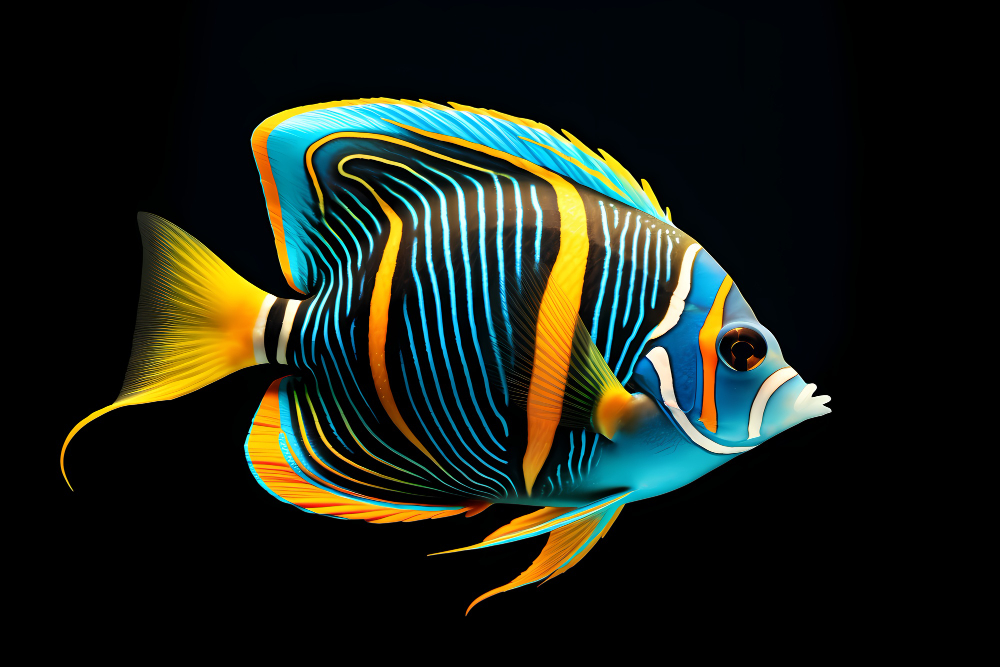
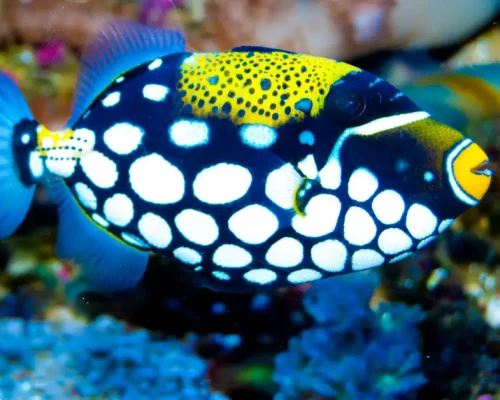
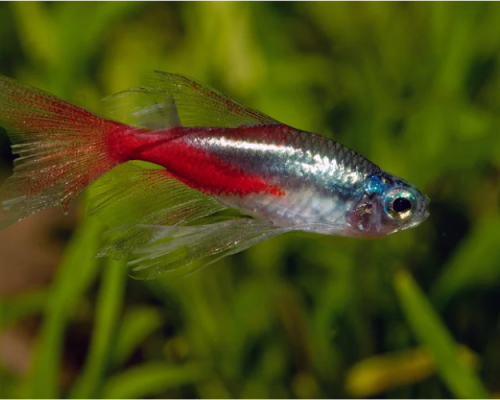
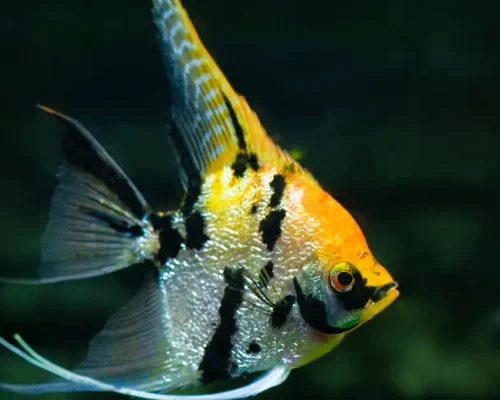
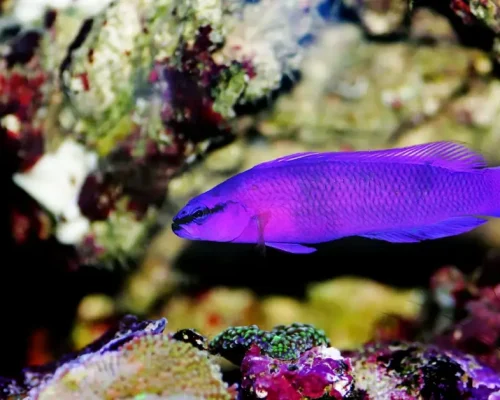
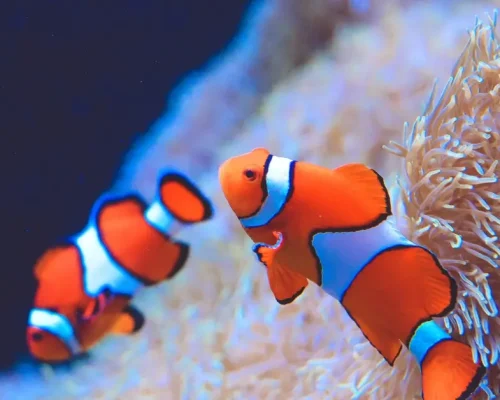

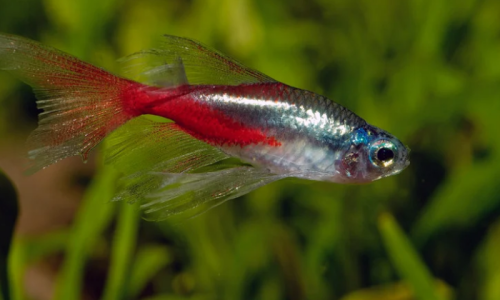
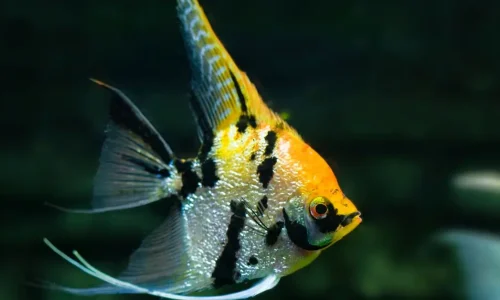
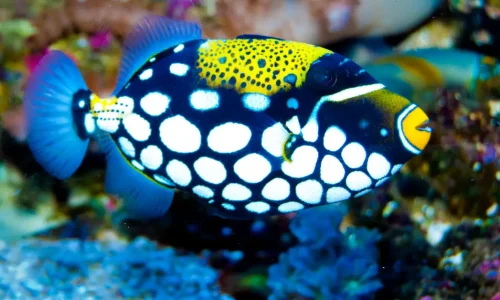

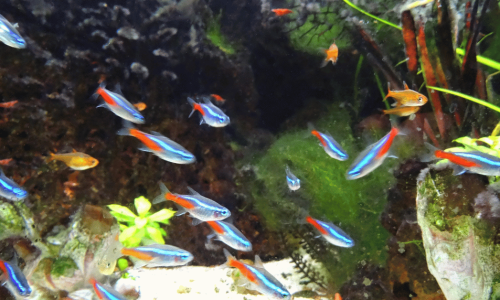
5 Comments
Your comment is awaiting moderation.
You rocked this subject and have astounding insights. I also work hard in putting together great content about Cosmetic Treatment, feel free to visit 81N
Your comment is awaiting moderation.
Wow, this post has given me useful info and answered some of my questions. I hope to give something back and aid others like you helped me. Feel free to surf my website UY6 about Thai-Massage.
[…] The Ultimate Guide to Angelfish Care: Tips and Tricks […]
[…] The Ultimate Guide to Angelfish Care: Tips and Tricks […]
Very Informative
♥️♥️
♥️👍